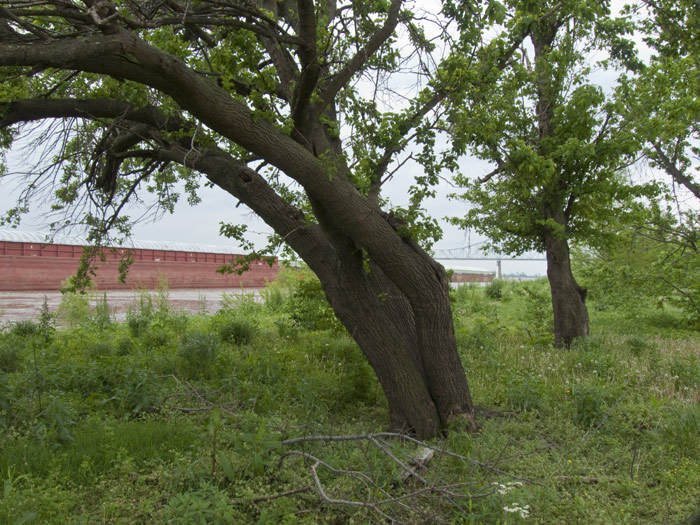Wednesday, May 6, 2009 - Clarksburg WV
< previous day | archives | next day >

US60 bridge over the Mississippi River, Fort Defiance Park, Cairo IL, May 4, 2009
Could we have an inexperienced pilot at work here?
This is the same lash of barges and tow boat I pictured on the Ohio River in yesterday's journal entry. It took nearly an hour for the pilot to maneuver the tow from where it was tied up on the Ohio a couple hundred feet upstream from where you see the tow boat in yesterday's picture to where you see the forward half of the lash in the Mississippi above. I think he missed his mark. The lash where you see it is too close to shore to go forward under the bridge and I can't imagine that with all the maneuvering it took to get it properly aligned with the bridge that he meant to put it there.
The two rivers join at roughly 90 degrees to each other here. Basically what the pilot did was, once he was clear of the mooring on the Ohio was to back downstream about two lash lengths, then with the aid of the Mississippi current and some engine work, turn the whole shebang counterclockwise about 90 degrees and head up the Mississippi - except that he didn't back up quite far enough before making the turn and ended up too close to shore to get under the bridge.
It must have been embarrassing having this old duffer taking pictures of the whole thing.
Night camp
Wal-Mart Supercenter in Clarksburg WV
Wal-Mart Supercenter Store #1544, 550 Emily Dr, Clarksburg, WV 26301 - (304) 622-1954
- Good level parking
- Verizon cell phone service- good signal
- Verizon EVDO Broadband service - none but 1x dialup speed is reasonable
- Locate this Walmart on my Night Camps map
- Find other Wal-Marts in the area
- Check the weather here
One Forgets
One forgets words as one forgets names. One's vocabulary needs constant fertilisation or it will die.
Evelyn Waugh